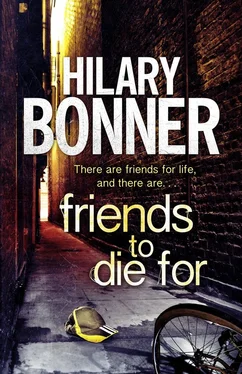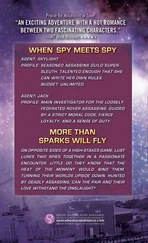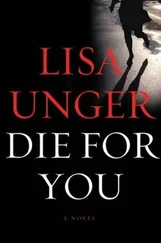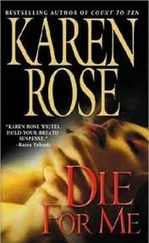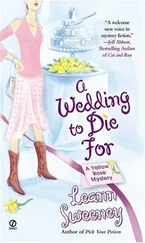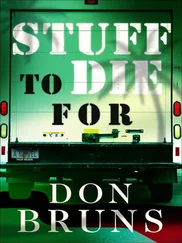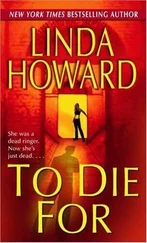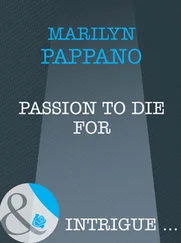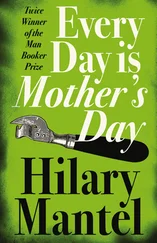The eyes were blue. He changed their colour too, turning them hazel, then dark brown.
Finally he added spectacles, experimenting with different kinds of frames. Wire ones, round ones, oval, black ones, red ones. Then he tried tortoiseshell.
A frisson of excitement began somewhere in Vogel’s lower abdomen and expanded slowly through his body. His mouth was dry. His fingers were trembling. He had it — or at least part of it. He knew who that woman was. And she certainly wasn’t a Polish wannabe student.
He printed his doctored version of George’s photograph, googled a name, brought up another picture, printed that too, and used the Met’s recently acquired facial recognition software to make the final comparison.
Then he hurried along the corridor to find Nobby Clarke.
The DCI was on the phone when Vogel barged through her door. Clarke looked up, unimpressed. Vogel didn’t give a damn.
‘It’s urgent, boss,’ he said.
Frowning, Clarke ended her call. Vogel slapped the three photographs onto her desk: the original photo taken from George’s wallet, the version he had just photoshopped, and, uncannily similar to the second, the third which he’d just downloaded. He tapped it with an extended forefinger.
‘Alice Turner,’ he said. ‘Remember her?’
Then he pointed to the photograph he had doctored. ‘An amended version of the picture of George Kristos’s alleged girlfriend,’ he said.
Light dawned on Nobby Clarke’s face.
‘Bloody hell!’ she said. ‘I remember Alice Turner. Who doesn’t?’
She glanced down again at the pictures before her.
‘And that photograph. It was iconic. In all the papers. My God, I can’t believe none of us saw this before. These are pictures of the same woman.’
‘Yes, and facial recognition software backs it up. The proportions and so on are identical.’
Vogel would have bet his life that Clarke would remember Alice Turner. There were images that stuck in your mind forever. The criminals evil beyond comprehension. Myra Hindley, half-pouting, staring challengingly at the camera. Fred West, plump-cheeked and boyish. And then there were the innocent victims, their lack of foreboding making their eternal pictorial presence all the more poignant. Little James Bulger, holding the hand of one of his killers. Milly Dowler doing the ironing. Beautiful Anni Dewani, murdered on honeymoon, in her Indian wedding dress. And Alice Turner. Even after twenty-three years, her face was instantly recognizable.
Vogel supposed it was the same for everyone, but he always felt these things meant more to police officers. Maybe they cared that bit more. If not, why would you join the police force? Vogel glanced down at the picture. Alice Turner’s kindly eyes seemed to gaze reproachfully back at him. But what happened to her had not been Vogel’s fault. It hadn’t been anyone’s fault, really, except the young bastard who’d attacked and maimed her.
Alice had somehow survived, but was unable to cope with her terrible injuries. Two years later she committed suicide.
Vogel had been a probationary PC when it happened, a new recruit. He guessed Clarke must be three or four years older than him, in order to have been a contemporary of Forest’s, and therefore almost certainly a serving officer at the time. The Alice Turner story had sent shockwaves through police forces nationwide. People in all walks of life had been shocked, of course, but the general public had been spared the gruesome details.
Alice Turner had been brutally attacked at her Edinburgh home. Her tongue had been hacked off and both her eyes gouged out. Her attacker had pounced in the early hours of the morning while she was asleep in bed. Without the advantage of surprise, he would have struggled to overpower her, for he had little physical strength. He was after all, just a boy. A boy ten years old.
It had been 1990, three years before poor James Bulger was abducted, tortured and murdered by two ten-year-old boys. In 1990 the police and the great British public had found it hard to believe that a ten-year-old child could be capable of such violence. The horror of it had transfixed the nation, and Alice Turner’s photograph had featured on every front page and news bulletin. The ‘before’ photograph, that was. And it was impossible to look at it without imagining what the ‘after’ must resemble.
The press were forbidden by law from revealing the identity of the child responsible. Not only could they not name him, they were prohibited from publishing any details that might lead to him being identified. This meant they could not reveal that the boy in question was Alice Turner’s foster son. But Vogel had known. It had been common knowledge throughout the police forces of the United Kingdom. Even amongst rookies like him.
‘And this picture that none of us can forget, albeit significantly altered, was in George Kristos’s wallet?’ mused Nobby Clarke. ‘Turned into the fictional Carla Karbusky. She looks a bit younger than Alice does in the un-doctored photo.’
Vogel nodded. ‘Alice was forty when she was attacked. I reckon Kristos has deliberately made her look younger and more contemporary. Turned her into someone suitable to be his girlfriend. Also someone you wouldn’t immediately recognize as Alice. But Alice all the same.’
‘Pretty damned twisted,’ muttered Clarke.
‘No doubt about that, boss,’ agreed Vogel.
‘What was the name of the boy? Something Scottish, as I remember... Rory, Rory something?’
‘Rory Burns,’ said Vogel. ‘As I recall, he’d been badly injured in a motor accident when he was very young. His mother had been killed in the crash and his father couldn’t cope, so little Rory was put into care and eventually fostered by Alice Turner and her husband. He’d been with the couple for about six years and seemed quite settled. I don’t think they ever found out what made him turn on her.’
‘“Like a rabid dog” — that was how the prosecution counsel described the boy,’ murmured Clarke. ‘It’s all coming back to me now. Edinburgh High Court, wasn’t it?’
‘Yes, boss. Just like Venables and Thompson, the Bulger killers, Rory Burns was tried in an adult court because of the severity of his offence.’
‘Didn’t he say something quite chilling when he was arrested, something biblical? It came up in court and was quoted everywhere.’
Vogel looked down at a report of the trial which he’d just printed out.
‘ And thine eye shall not pity, but life shall go for life, eye for eye, tooth for tooth, hand for hand, foot for foot ,’ he recited.
‘Shit,’ said Clarke.
‘After the attack, the boy just stayed in the house waiting for Alice Turner’s husband to get home,’ Vogel continued. ‘He worked shifts, apparently, and she very nearly bled to death. Poor man found her upstairs. Burns was downstairs, covered in Alice’s blood.’
‘The boy was mentally ill, surely?’
‘It was decided that he was sane enough to have known what he was doing and to stand trial,’ said Vogel. ‘But whereas at the close of the trial of Venables and Thompson the judge ruled that their names should be released in spite of their ages, Rory Burns’ anonymity was preserved. It leaked locally, though. He spent eight years at a young offenders’ centre, and when he was released there was a public outcry in Scotland, though nothing like the furore over Venables and Thompson.’
‘What happened to him?’ asked Clarke.
‘He was released on licence and sent to some kind of halfway house in Edinburgh...’ Vogel paused. ‘That was in 1998, the year of the King’s Cross murders.’
Clarke looked thoughtful. ‘So it could have been him. He just had to get himself to London and back.’
Читать дальше
